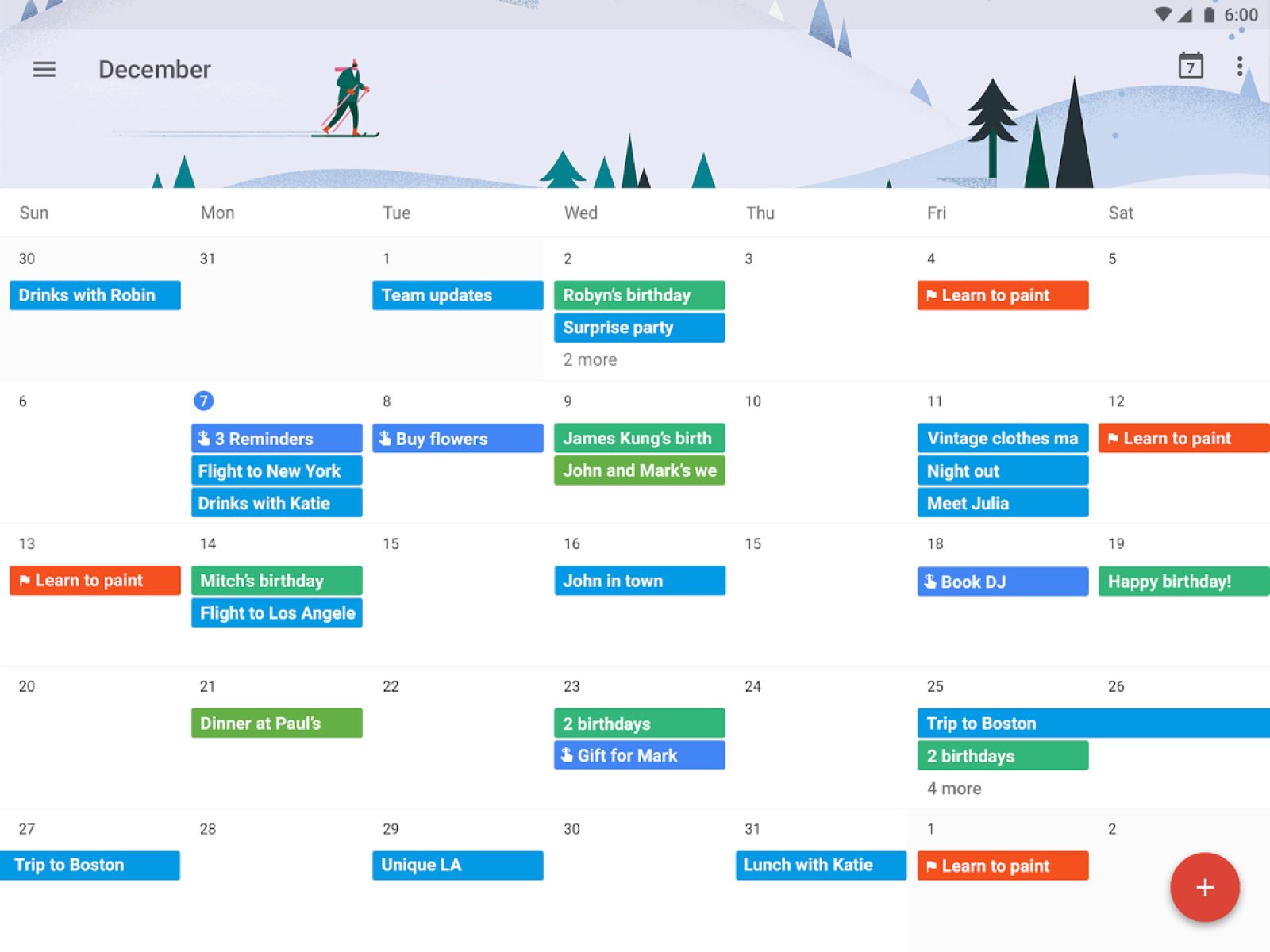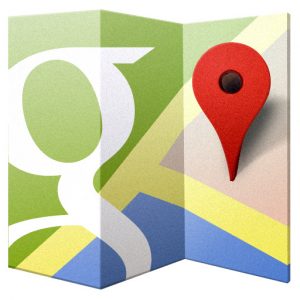Introduction
Are you tired of looking at the same old plain and boring Google Calendar? Do you want to add a touch of creativity and personalization to your daily planning tool? Well, you’ve come to the right place! In this article, we will explore various techniques to make your Google Calendar look visually appealing and exciting.
Aesthetics play a significant role in our daily lives, and our calendars are no exception. By customizing the appearance of your Google Calendar, you can not only make it visually pleasing, but also improve its functionality and usability. Whether you use your calendar for personal appointments, work events, or both, following these tips will make your Google Calendar a delightful and organized experience.
From choosing a color theme to adding relevant images and utilizing advanced features, we will cover various aspects that will help you transform your Google Calendar into a visually stunning and efficient planning tool. So, let’s dive in and explore the creative ways to make your Google Calendar pretty!
Step 1: Choose a Color Theme
One of the simplest yet most effective ways to make your Google Calendar visually appealing is by choosing a color theme that reflects your personality and preferences. Google Calendar offers a wide range of color options that you can choose from for each calendar or even for individual events.
Start by selecting a color palette that resonates with you. You can opt for vibrant and bold colors to add energy and excitement to your calendar, or you can go for a more calming and soothing palette with pastel shades. The choice is yours!
For example, if you have multiple calendars for personal, work, and social events, assign a unique color to each one. This way, you can easily distinguish between different types of events at a glance. Not only will this make your calendar look visually pleasing, but it will also help you stay organized.
Remember, colors evoke different emotions and associations, so choose ones that align with the purpose of each calendar or event. Using colors consistently across your calendar will create a harmonious and cohesive look.
Additionally, if you want to make your calendar even more visually striking, consider using complementary colors. Complementary colors are opposites on the color wheel and create a high contrast effect. This can help important events stand out and grab your attention.
Once you’ve chosen your color theme, you can easily apply it to your Google Calendar. Simply go to the settings menu, select the calendar you want to customize, and choose your desired color. Experiment with different color combinations until you find the perfect one that makes your calendar look pretty and visually appealing.
By choosing a color theme for your Google Calendar, you not only enhance its visual appeal but also make it easier to navigate and understand at a glance. So, take a few moments to select your favorite colors and bring your calendar to life!
Step 2: Customize Your Calendar View
Customizing your calendar view is another fantastic way to make your Google Calendar look pretty and tailored to your needs. Google Calendar offers several customization options to help you personalize the way your calendar is displayed.
Firstly, consider changing the default view of your calendar. By default, Google Calendar displays events in the “Month” view, but you can choose from other views like “Week,” “Day,” or “Agenda.” Experiment with different views to find the one that suits your planning style and preferences.
Next, explore the different layout options available. Google Calendar allows you to choose between a classic, bold, or comfortable layout. The classic layout displays events with minimal spacing, while the bold layout provides a more prominent and vibrant look. The comfortable layout offers more spacing between events, making it easier to read and navigate.
In addition to the overall view and layout, you can also customize the way events are displayed. Google Calendar offers options to show or hide weekends and declined events. This allows you to declutter your calendar view and focus on the events that matter most to you.
Furthermore, you can choose how you want events to be displayed in terms of time. You can opt for a 12-hour or 24-hour time format, depending on your preference and familiarity. This small tweak can make a significant difference in how your calendar is presented.
Another customization option is to adjust the zoom level of your calendar. If you have multiple events in a day or need to see more details, zooming in can help you view them clearly. On the other hand, if you prefer a broader overview, zooming out can provide a more condensed and comprehensive view.
Overall, customizing your calendar view allows you to tailor it to your personal preferences and improve its usability. Take the time to explore the various customization options available in Google Calendar and find the view, layout, and display settings that make your calendar look pretty and visually appealing.
Step 3: Add Descriptive Event Titles
When it comes to making your Google Calendar look pretty, it’s not just about the visual elements; it’s also about the content. Adding descriptive event titles is an essential step in making your calendar more informative and engaging.
Instead of using generic titles like “Meeting” or “Appointment,” try to provide more details and context in your event titles. For example, instead of “Meeting,” you can specify “Marketing Team Meeting” or “Client Presentation.” This not only helps you remember the purpose of the event but also gives others a clearer understanding of what the event is about.
Using descriptive event titles not only makes your calendar visually appealing but also improves overall organization and efficiency. When you have a clear idea of what each event entails, it becomes easier to prioritize and plan your day effectively.
Additionally, consider incorporating keywords in your event titles that are relevant to the topic or purpose. This can help you later when searching for specific events or when others are looking for events related to a specific keyword.
Moreover, you can experiment with adding emojis to your event titles to make them more visually interesting and appealing. An emoji can instantly convey the mood, theme, or type of event, making it easier to identify and remember.
For example, if you have a team lunch, you can use a ? emoji to represent it. If you have an important deadline, you can use a ⏰ emoji to signify urgency. Be creative and use emojis that are relevant and intuitive.
Remember, the goal is to provide meaningful and informative event titles that not only make your Google Calendar pretty but also enhance its usability and readability. So, the next time you schedule an event, take a few extra moments to craft a descriptive and engaging title that adds value to your calendar.
Step 4: Use Emoji Icons
Adding emoji icons to your Google Calendar is a fun and creative way to make it visually appealing and expressive. Emojis can add a touch of personality and emotion to your events, making them more engaging and memorable.
Using emojis can make your calendar look pretty and vibrant. Instead of just text, emojis provide a graphical representation of the event or its theme. This can help you quickly identify and differentiate between events in a visually appealing way.
When choosing which emojis to use, consider the purpose and nature of each event. For instance, if you have a birthday celebration, you can use a ? emoji to convey the festive mood. If you have a workout session, you can add a ? emoji to indicate physical activity. Match the appropriate emoji to capture the essence and spirit of your events.
Furthermore, emojis can act as visual cues that highlight the significance or urgency of an event. For example, if you have a deadline, you can use a ⏰ emoji to emphasize its importance. If you have an upcoming vacation, you can use a ✈️ emoji to show anticipation.
Remember to use emojis strategically and sparingly. Overusing emojis can clutter your calendar and make it difficult to read. Use them selectively for events that you want to stand out or that have a specific theme associated with them.
Incorporating emojis also adds a touch of creativity and personalization to your calendar. It allows you to infuse some fun and playfulness into your daily planning. So, take a moment to explore the vast collection of emojis available and start using them to make your Google Calendar look pretty and lively!
Step 5: Create Color-Coded Event Categories
Color-coding your events is a fantastic way to make your Google Calendar visually appealing and organized. By assigning specific colors to different event categories, you can easily identify and differentiate between them at a glance.
Start by brainstorming the different categories or types of events you frequently have in your calendar. This could include work meetings, personal appointments, social gatherings, deadlines, or any other relevant categories.
Once you have identified your event categories, assign a unique color to each one. For example, you could use blue for work-related events, green for personal appointments, red for deadlines, and so on. The choice of colors is entirely up to you and should align with your preferences and needs.
To apply the color-coding, create separate calendars for each event category within your Google Calendar. Simply go to the settings and create a new calendar for each category. Then, customize the color for each calendar accordingly.
When you schedule an event, make sure to assign it to the appropriate category/calendar. This way, when you view your calendar, the events will be displayed in their designated colors, allowing for easy identification and organization.
Color-coding your events not only makes your Google Calendar visually appealing but also helps you quickly understand the composition of your schedule. You can easily see how much time you are allocating to work, personal commitments, or any other category.
Additionally, color-coding can also assist in prioritization and decision-making. You can easily spot clashes or overlaps between events of different categories and adjust your schedule accordingly.
Experiment with different color combinations and find ones that resonate with you. Keep in mind that the goal of color-coding is not only to make your calendar pretty but also to make it more functional and efficient.
By creating color-coded event categories, you will have a visually appealing and well-organized Google Calendar that allows you to easily manage and differentiate between your various commitments.
Step 6: Add Relevant Images
Adding relevant images to your events is a delightful way to make your Google Calendar visually captivating and engaging. Images can provide visual context, evoke emotions, and make your calendar more personalized and meaningful.
When adding images to your events, consider using visuals that are relevant to the event itself. For example, if you have a wedding anniversary celebration, you can include a picture of the couple. If you have a team-building activity, you can add an image that represents unity and collaboration.
You can use Google Calendar’s built-in image search feature to find and add images directly from the web. Alternatively, you can upload your own images or use images from your Google Photos or other online image libraries.
Along with adding images to specific events, you can also consider adding a cover image for your entire calendar. This cover image can be a serene nature scene, a motivational quote, or any image that represents the overall theme or purpose of your calendar.
Adding images to your events not only makes your Google Calendar look visually appealing but also enhances your understanding and connection with each event. Visual cues can help trigger memories, location associations, or even emotions associated with specific events.
It’s important to note that while images can significantly enhance the aesthetic appeal of your calendar, be mindful of the size and placement of the images. Avoid using images that are too large or excessively detailed, as they can overpower the event details and make the calendar cluttered.
Remember, the goal is to strike a balance between visual appeal and functionality. Ensure that the images you add complement the event details and enhance the overall user experience.
By incorporating relevant images into your Google Calendar, you infuse a sense of personalization and creativity that makes your calendar visually appealing and meaningful. So, unleash your creativity and bring your events to life with expressive and captivating images!
Step 7: Utilize Advanced Features
To truly make your Google Calendar stand out and maximize its functionality, it’s important to explore and utilize the advanced features it offers. These features can enhance your productivity, simplify scheduling, and elevate the overall user experience of your calendar.
One advanced feature you can take advantage of is the option to set reminders and notifications for your events. By configuring reminders, you ensure that you never miss important appointments or deadlines. You can receive notifications via email, pop-ups on your device, or even SMS messages.
Another valuable feature is the ability to share your calendar with others. This is particularly useful for collaborative projects, team meetings, or even personal events. You can grant different levels of access to different individuals, allowing them to view or edit your calendar as per your preferences.
Google Calendar also integrates seamlessly with other apps and services, such as Gmail, Google Meet, and Google Tasks. By utilizing these integrations, you can create and manage events quickly, send meeting invites, and even join virtual meetings directly from your calendar.
Addiitionally, you can use the “Find a Time” feature to easily identify overlapping schedules and find the best time slot for a meeting. This feature takes into account the availability of all participants, making scheduling more efficient and eliminating the back-and-forth communication.
Moreover, you can take advantage of the “Goals” feature in Google Calendar, which allows you to set and track personal or professional goals. This feature helps you prioritize and allocate time for activities that align with your overarching objectives.
Lastly, explore the various customization options available in Google Calendar. You can adjust the time zone settings, change the first day of the week, set working hours, and even hide declined events to optimize your calendar for your specific needs.
By actively using these advanced features, you unlock the full potential of your Google Calendar and elevate its functionality. Whether it’s managing reminders, sharing calendars, integrating with other apps, or setting goals, utilizing these advanced features will make your calendar a powerful tool for organization and productivity.
Conclusion
Creating a visually appealing Google Calendar not only makes it more enjoyable to use but also enhances its functionality and organization. By following the steps outlined in this article, you can transform your Google Calendar from a simple planning tool into a beautifully customized and personalized scheduler.
From choosing a color theme to customizing your calendar view, adding descriptive event titles, using emoji icons, creating color-coded event categories, incorporating relevant images, and utilizing advanced features, there are numerous ways to make your Google Calendar look pretty.
Remember that the goal is not just to make your calendar visually pleasing, but also to improve its usability and efficiency. By infusing creativity and personalization, you can truly make your calendar a reflection of your unique style and preferences.
Whether you use Google Calendar for personal, professional, or both, making it visually appealing will enhance your overall planning experience. It will make it easier to navigate, organize your schedule, and stay on top of your upcoming events.
So, take the time to explore the various customization options, experiment with colors, titles, and images, and utilize the advanced features to their full potential. Your Google Calendar will not only become pretty, but also an invaluable tool in managing your time and commitments effectively.
Now it’s time to unleash your creativity and make your Google Calendar a visually stunning and functional masterpiece. Happy planning!











![20 Best Productivity Apps to Get Things Done [PC & Mac]](https://robots.net/wp-content/uploads/2020/05/write-593333_1920-300x177.jpg)




![[Full Guide] How to Bypass Google Account Verification After Reset](https://robots.net/wp-content/uploads/2023/11/How-to-Bypass-Google-Account-Verification-After-Reset-300x180.png)








